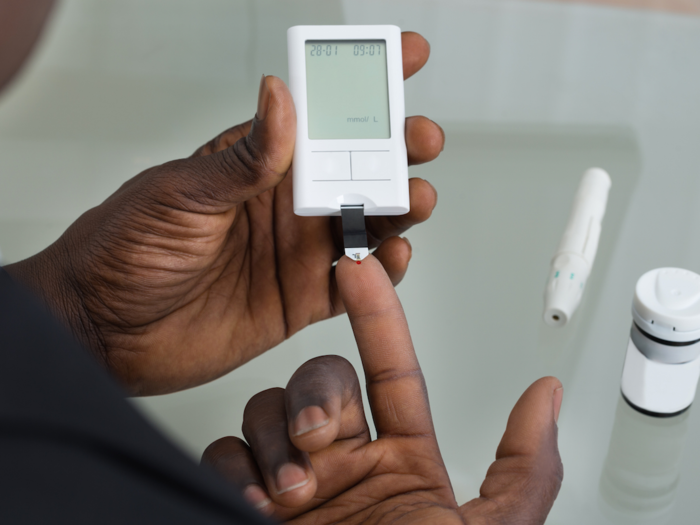- Home
- slideshows
- miscellaneous
- Shorter, high-intensity workouts offer the same benefits as longer, moderate ones - here's how to get started and how it could transform your body
Shorter, high-intensity workouts offer the same benefits as longer, moderate ones - here's how to get started and how it could transform your body
Even extremely small amounts of all-out effort — just one minute — can have powerful effects on overall fitness.

Various studies have shown that high-intensity interval workouts can lead to big improvements in blood-sugar levels.

One review of research found that people who start doing high-intensity workout programs can improve insulin sensitivity by 23-58%. The studies analyzed in that review ranged from two to 16 weeks long.
Insulin sensitivity helps people's bodies regulate blood sugar levels. Researchers think high-intensity training plays a role because the regimen improves the ability of muscles to take up glucose from blood so those muscles can be ready to jump into action.
High-intensity workouts might be the best way to improve blood pressure.

Several studies have found that after 12 to 16 weeks of high-intensity training programs, people at risk of hypertension showed significant improvements in arterial stiffness (which leads to high blood pressure).
These high-intensity programs were more effective for improving that stiffness than conventional exercise routines.
High-intensity training is one of the most important ways to improve athletic performance.

Whenever you look at a training program designed to help someone become faster, stronger, or a better performer in a certain sport, that program will almost certainly include sets of high-intensity intervals.
That's because these sorts of programs push people's limits, which is what you need to do to improve at a sport.
High-intensity interval workouts are much more effective than pure endurance training at improving VO2Max (that commonly used measure of how well muscles use oxygen). Even people who don't improve much with traditional exercise programs often see significant improvements after doing interval training.
To get started with a high-intensity training program, Barone recommends picking a type of workout that you're interested in.

On a basic level, any high-intensity interval program involves a warm up, followed by a few cycles of intense activity with short rest breaks in between.
That activity could be sprinting, swimming, cycling, or do body-weight exercises.
Researchers have studied bursts of activity as short as 20 seconds at a time, but most studies have people go at full intensity for between one and four minutes before they take a short break. Then they repeat the cycle.
There are plenty of pre-designed interval workout programs you could try.

Several routines that we've found effective include body-weight exercises using the the 7-Minute Workout app or the Sworkit app.
You can also try this study-backed 10-minute routine, which includes just one minute of all-out exercise. Other routines involve more strength training.
Don't push yourself too hard during your first high-intensity workout.

Barone recommends that if you're doing a new type of activity, you start at a beginner level. This is especially true if you are trying to get back into shape but haven't been working out regularly. Don't pick something that's too complicated for you to do with proper form or technique. Start simple and work your way up to harder programs to avoid injuring yourself.
Warm up properly.

When going all-out, there's a chance you could injure yourself if you aren't warmed up. And that doesn't mean quickly stretching and touching your toes, either.
Barone suggests doing a five-minute dynamic warmup that will help get your muscles ready to go. When warming up and stretching, focus on the muscles you're going to use — your shoulders don't need much attention if you're going to be sprinting, for example, and your back shouldn't get neglected if you'll be swimming.
Listen to your body.

While high-intensity training by definition means you have to push yourself, make sure you don't put yourself out of commission and miss your next workout. Try to complete every exercise with the best form you can.
"It's good to push the body, but you need to listen to it as well," Barone said. "Be aware of warning signs ... don't push through pain, that might mean you need to take it easy."
If you feel a sharp or sudden twinge, stop and assess the situation before you continue.
Repeat.

High-intensity workouts can yield great benefits if you do them several times a week, perhaps balanced in between other longer workouts.
But the best form of exercise is one you can do regularly. If you find a routine you like enough to do on a consistent basis, that's the way to see the most improvement over time.
Popular Right Now
Popular Keywords
Advertisement